What is the Best MOBA – League of Legends or Dota 2? There have been flame wars, debates, arguments, pointless mom jokes and so much more when it comes to fans/players trying to prove their selected choice of MOBA as the better of the two dominant Multiplayer Online Battle Arena games currently taking the world by storm. (Sorry HOTS! You’ll get there eventually).
But a lot of people pick sides without knowing both games, so let’s clear up a few details.
LET THERE BE LIGHT
Before there was a League of Legends, there was Defense of the Ancients (Dota)… But a little known fact is that the origin of Dota was based on a Starcraft map named Aeon Strife. Finding the concept behind Aeon Strife to be far-sighted at its time, developer Eul created a custom mod for the Warcraft 3: Reign of Chaos engine using World Editor.
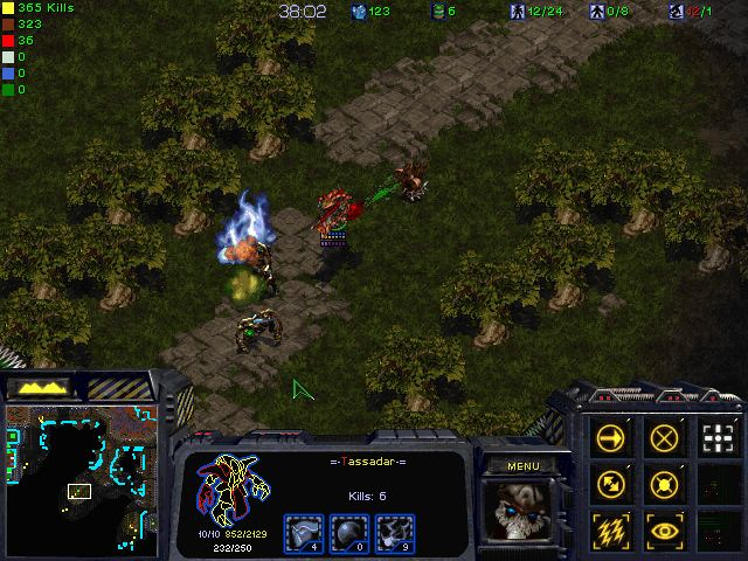
That mod became the very first Dota map in history and gained popularity across the world with its variations and spinoffs. The one that gained the most popularity and set the standard as the most influential MOBA of all time was DotA Allstars, developed by modder Steve Feak (under the alias Guinsoo). Guinsoo designed the now-iconic Dota map (long before he left to create League of Legends). Dota was eventually taken over by the anonymous developer “Ice-Frog”, who since 2005 continued to release updated versions of Dota until eventually realizing the potential for the game to be able to run on its own engine, thus joined Valve to develop Dota 2.
These iconic developers were given homage in Dota after two items were named after them; Eul’s Scepter of Divinity and Guinsoo’s Scythe of Vyse. Even the Ancient Roshan was named after Steve Feak’s bowling ball.
So what became of Steve “Guinsoo” Feak while Ice-Frog continued developing Dota? He joined Riot Games alongside TDA Clan-member and former administrator of dota-allstars.com, Steve “Pendragon” Mescon and created League of Legends… Its inspiration? DotA Allstars.
League of Legends is probably considered the most played and most popular Moba to have ever been created to date, yet most Dota players and fans continuously call it a ‘Copy’ of Dota. As a veteran who began with Dota, plays Dota 2 and LoL let me take you through the similarities and some of the major differences I’ve come to notice between League of Legends and Dota/Dota 2.
THE SIMILARITIES
Let me introduce to you the concept and main objective behind both Dota and LoL. The respective game-maps have two sides: on one side is your base and on the other is the enemy team base. There are three lanes that connect the two opposing bases running along the top, down the middle and along the bottom of the map. Between these lanes is terrain hidden by Fog of War. It is commonly referred to as the jungle. Separating both team lanes and jungles is a river running across the center of the map.

The main objective is to select a single, player controlled character (Dota 2: Heroes/LoL: Champions) as a part of a 5-person team and work together with them to ultimately destroy the main structure located deep in the heart of your enemy’s base. If your team successfully destroys this structure, you win the game…and vice versa if the enemy team destroys your main structure. These lanes are protected by towers – three assigned to each lane and more defending the main structure.
To do this, heroes/champions have abilities that can be obtained and upgraded upon leveling up. This is done by slaying creeps, enemies and towers to gain experience. The use of abilities contributes towards winning fights between the enemy team and your team. Some are used for offensive play, some for defensive and some for utility. They’re quite widely varied. One skill, for example, can stun and slow all enemies around you. Another can teleport you directly behind an enemy for the kill.
By default, both bases release waves of creeps/minions that neutrally skirmish each other along the three lanes. Your hero/champion must slay these creeps in order to generate gold and purchase items to power up and get stronger as the game progresses. Purchasing these items is the most essential part of building your character – it allows you to make your character stronger and modify how you play. A good set of items boosts your hero/champion’s ability to fight and slay the enemy heroes/champions.
AND NOW THE DIFFERENCES: BRING ON THE HEROES
Let’s start with the heroes – or champions. In both games, champions have two ways to inflict damage on someone or something: a physical attack or an ability. Each character also scales off certain stats.
Let’s not get into the differences between characters – League has its own set, Dota has its own set, and comparing the two could be a lifetime task. Instead, let’s look at the basics of how characters are built.
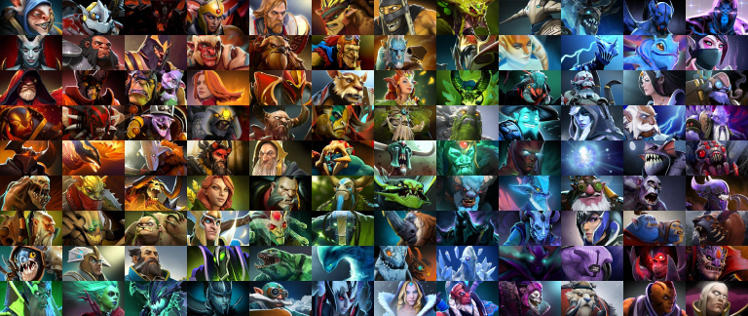
In Dota/D2 they are Strength (STR), Agility (AGI), and Intelligence (INT) – The primary attributes given by Blizzard to hero characters in Warcraft 3, upon which Dota was built. Buying items to increase these attributes is what makes your hero stronger. For every additional point of STR, your hero receives bonus HP (Hit Points) and HP Regeneration. For every additional point of AGI, your hero receives bonus Armor and Attack Speed and for every additional point of INT, your hero gains bonus MP (Mana Points) and Mana Regeneration.
Heroes are broadly divided depending on whichever of these three attributes is their primary, and gain attack damage bonuses based on their primary attribute.
AGI heroes, for example, tend to be weak (fewer Hit Points and Regeneration) but tend to hit harder and faster as they level up (increasing attack damage and attack speed). INT heroes tend to have larger mana pools for casting abilities.
In addition, your hero also has Armor and Spell Reduction to help reduce incoming damage. Both games have Movement Speed, and that stat works pretty much the same for both games. Items contribute greatly to these stats, but item-builds are different based on your hero’s role in the team. For example, if you’re expected to tank (to take a lot of damage), you build a Vanguard. If not, you might build movement speed or attack damage.
In League, Champions scale on Attack Damage (AD) and Ability Power (AP), have Armor (AR) and Magic Resist (MR) that scale with the purchase of items just like it does in Dota, but the biggest difference is that unlike in Dota, your Champion’s abilities also scale with AD/AP ratios, so items that affect your base stats also empower your abilities. Unlike in Dota, where there often is a clear distinction between base stats and abilities, League champions’ abilities are affected directly by then – one attack, for example, may deal 90% of your AP as damage.
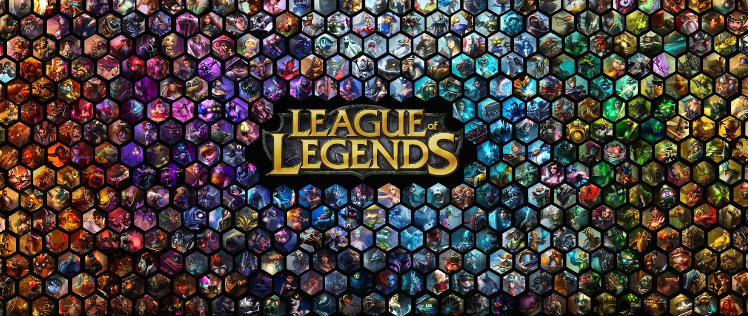
And unlike in Dota, you can directly affect your ability cooldown rate – that is, the time between using an ability – with items. You can build items to let you spam skills constantly – the only equivalent in Dota being a Refresher Orb, which lets you reset your cooldowns and spam your abilities only twice.
Also unlike in Dota, League heroes tend to be structures around in-game roles – like “Tank” or “ADC (Attack Damage Carry)” rather than the more free-form INT-AGI-STR system.
That is not to say that these roles exist in Dota, but there the categorization is less rigid (some would call it more free-form).
Outside game-play in the League, there are specific skill-trees (like in WoW) that affect how your champion’s abilities and game-play work while in-game. These skills, called ‘Masteries’ are what define your own play style from another. There’s even a grid system that lets you equip special ‘runes’ that enhance your stats like providing bonus AD, AP, AR, MR, Regen, Cooldowns, Movement speed, Attack Speed, Crit chance, Crit damage, Armor Penetration, Magic Penetration and more.
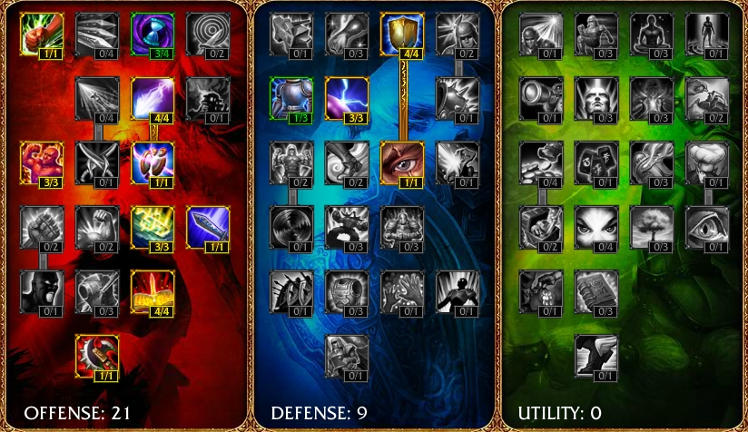
Often, this system irks players used to Dota’s right-off-the-bat setup, as Runes and Masteries take time to unlock in League of Legends. High level players are likely to have more Runes and Masteries than players who’ve just started out. This is where matchmaking steps in – in both games matches generally place you with players of equal skill levels, and in League this becomes critical to evading unfair match-ups.
There are differences in the abilities. Generally speaking, abilities in League of Legends are harder to land, because they are skillshots – attacks that target a particular region that you click, which requires that you often learn to predict how your opponent is going to move next. In Dota, most skills target characters – click and boom. On the upside, In League you can (again, generally) spam more of these skills in a fight as opposed to Dota.
Each champion in League of Legends also has a choice of additional skills – you can select two from a pool of many. These are Summoner Skills and have relatively long cooldowns and often provide some last-minute utility in a fight. Some of these skill effects can be replicated in Dota with the purchase of certain items.
CREEPY MECHANICS
In terms of In-game mechanics, one major difference between LoL and Dota is that in Dota, creeps/structures and even heroes (under certain conditions) can be denied by their own team, meaning that you can kill your own creep, break your own structure or deny your enemy team a kill by slaying your team mate… this denial system can only be applied with an auto attack when your target is critically low on HP. Denying is a huge part of the game, and successful players can essentially cripple newbies from leveling up by denying them the creeps,
In League, there is no denial system, so it makes last hitting (creep farming) so much easier. However when it comes to trading (battling the enemy champs) in your selected lane, champions are free to constantly harass each other from the start.
Another major difference is that Dota’s Fog of War and the unique in-game clock that shifts between Night and Day, influenced by Warcraft’s day/night internal clock system. While your area of vision is greater during the day time, it is comparatively lower at night, making it movement across the map more of a challenge. There is also a certain hero – Night Stalker – who works best during night: his skill-set revolves around being a terror in the night.

Fog of War can be very tricky. Dota2 uses a fairly natural system – which means enemies out of sight, behind tress, are likely to be hidden, and being on higher ground gives you more vision. If you control your movement right, you can confuse your enemies to make great escapes – usually referred to as ‘jukes’ by the community.
LoL has a brush system scattered strategically all around the map. Moving into a brush makes units within invisible unless your champion or an allied champion/minion (creep) is in that brush, walks into it or casts an ability that grants vision in a selected Area of Effect (AoE), or plants a ward within. This helps players set up ganks; an instance that usually involves one or more champions setting up a trap for unwary enemies… imagine walking into a bush just to check it out and you find the entire enemy team in there? Not a pleasant experience if you’re on the receiving end.
This factor makes warding an incredibly crucial part of competitive League play. You simply don’t want to walk into a bush and be greeted by a welcoming committee of five people grinning and sharpening their axes.

The warding system in Dota isn’t as complex as it is in League of Legends because there aren’t any ‘brushes’ for heroes to hide in. This, however, is balanced by a larger area in which to make ambushes – so who needs to hide in a ruddy bush when you can travel half-way or all the way across the map and surprise bumhump your enemy? However warding is still very crucial in Dota as it usually scouts out enemy player movements on the map, thus giving you intel on what they may be up to, or what they may be planning – this is an important factor in both games, yet are completely different all the same.
ENTER THE JUNGLE. ME, TARZAN.
Now we’re coming to probably the biggest difference between the two rival games… The Jungle!
In Dota, the jungle camps (located in areas between the lanes) automatically spawn Neutral Creeps that grant gold and experience upon slaying them. Some camps are tougher than the others and reward you with even more gold and experience based on its difficulty.
If your timing is right, you can trick the in-game clock system into thinking that the neutral creep camp has been cleared by just luring the creeps away from the spawning point. This results in stacking neutral creeps for mass farming gold/exp. Creep Stacking is a tactic used by most professional Dota teams just to ensure their carries have a higher GPM + EXP/MIN (Gold per minute + Experience per minute) by clearing these overcrowded camps. Not a good place to get stuck in if you’re under-farmed or very squishy because most of those creeps have special abilities as well … and they are not afraid to use them on you under certain circumstances.
Dota’s map being inherently larger, a successful ambush via a jungle takes some effort to set up, and once done, may prove disastrous to an enemy caught with a few miles between himself and safely.
It’s rare that there are dedicated jungling players – the jungle is used by the team as and when the opportunity arises.
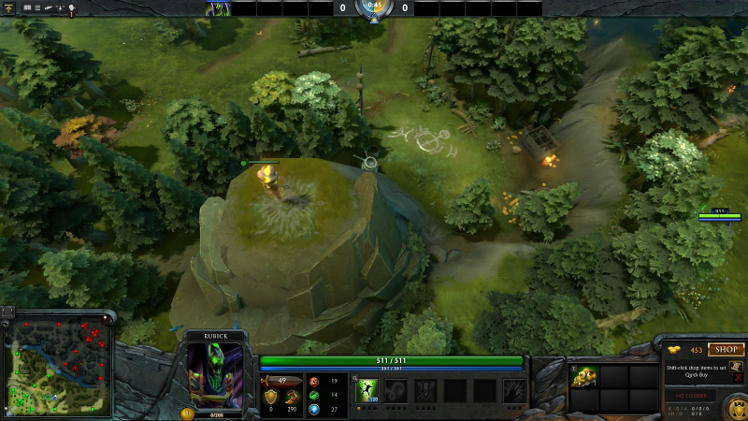
In League of Legends the jungle is a completely different ball game. A Jungler is a necessary pick for either team especially because there are two specific jungle monster camps that give the jungler (or any champion who slays it) a buff that affects either their abilities or their basic auto attacks. The Red Buff (Obtained by slaying the Elder Lizard) deals a small portion of true damage (Chaos damage in Dota) over time while also slowing the movement speed of enemies affected by it. The Blue Buff grants increased ability cooldown reduction while also providing super enhanced Mana regeneration to its wielder.
In competitive League, these buffs are usually given over to the carries in order for them to gain an advantage in lane. If any champion holding either or both of these buffs is slain by an enemy, the one to successfully finish the job gets the buffs instead, resulting in either turning the tide of the battle, or helping the champ become more sustained.
In these conditions, the jungler is a creature that sustain without any specific lane and moves across the map to gank and help the other lanes push forward onto enemy territory.
The jungler also is responsible for providing vision in those areas – again, wards. A successful jungler is a roving menace that haunts both jungles full-time. Unlike in the Dota jungle, where Neutral Creeps are fair game for anyone in need of experience, a LoL jungler generally considers the Neutral Creeps his/her property – the equivalent of a lane therein.
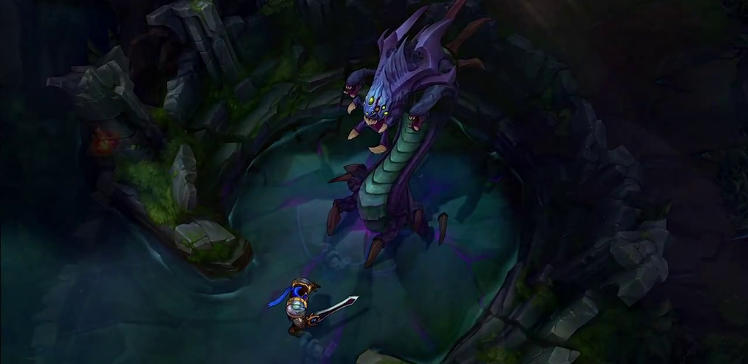
LoL also has a boss neutral monster and mini-boss (like Dota’s Roshan). The mini-boss ‘Dragon’ is very crucial jungle monster found on the left side of the river. It grants a high level of experience and gold to the entire team if slain. League’s version of Roshan is Baron Nashor (Nashor is Roshan in reverse – homage to that Bowling Ball). Baron Nashor spawns 15 minutes into the game and is incredibly hard to slay. The team that slays this monster receives the ‘Baron Buff’ that greatly enhances the entire team’s AP, AD, HP + Mana Regen.
Dota’s Roshan drops an ‘Aegis of the Immortal’ upon dying. Its wielder will come back to life upon being slain and consume the Aegis in order to do so. Roshan isn’t as tough as Baron Nashor is to slay, but he does have a very annoying bash skill that can stun you in place for a short duration and it can get applied repeatedly with every auto attack as it has a percentage chance of being activated.
BRING ME MY ITEMS, DAMMIT
One last difference I’d like to point out is the courier system in Dota. League of Legends does not have this. A courier can be purchased from the base shop and hold up to six items. This courier will travel across the map and deliver items to allied heroes (obviously enemies can have couriers too). This makes visiting base something that isn’t a must unless your character is killed.
This item delivery system is a unique feature that helps players remain active at all times and also makes itemization an easier task, due to the Dota map being much larger and more complex than the LoL map.
If you want to buy items in League of Legends, you have no choice but to return to base using the free recall feature that teleports you to base after channeling for a few seconds. Dota’s version of this would be the item Scroll of Town Portal. (Referred to as TP for short) that allows its user to teleport to any allied tower on the map after a short delay. The only way League can keep up with all the mass teleports is through the summoner skill ‘Teleport’ that also has a high cooldown… and like Boots of Travel, Teleport can be cast unto a creep/turret (tower) and even a ward.
Less significant differences involve the LoL 3v3 map The Twisted Treeline, The All-Random All-Mid map, The Howling Abyss and Dominion Mode (Capture Point mode in traditional Dota) that Dota do not have as of yet. However Dota 2 did recently release Pudge Wars and have seasonal specials like Diretide during Halloween.

In terms of competitive play the rivalry between these two amazing MOBAs has been incredible. Both games have had major tournaments across the globe and made both Riot Games and Valve very rich companies, but considering E-Sports has become a huge success world-wide, it isn’t altogether surprising that the rivalry will continue for as long as the two games are alive. There many more things I can tell you about the difference between these games, but that would be for another time and another day.
Is one better than the other? No. There isn’t a better. Both are unique. Both are different (as I have pointed out). Both games are enjoyable and both games are incredibly challenging in competitive play.
There ARE and always will be fanboys (and girls) who love one and hate the other, but for this I say: Hate is for those who lost their gamer way. If you want to be a MOBA professional, check out both games and learn from them both. You don’t have to restrict yourself to just one alone.
Until next time – GL HF and GG!




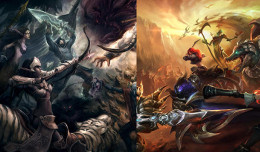


League of legends master race
Dota is way way better !!
U WOT M8? U WOT
LoL is good for beginners
I find MvC2 more fun between fidners than as a high-competition fighter. With fidners every character is useful and the battles are much more exciting. When it’s played at a high level a total of six characters (seven if you’re lucky) are used and the same traps are played out over and over. And frankly, that gets boring.Guilty Gear is definitely not the epitome of 2D fighters, but I find it a lot more fun to play, even at higher competition levels. Just about every character is used somewhere along the line, though the whole package (story, characters, and especially music) keeps me playing. But I will say Accent Core upsets me.